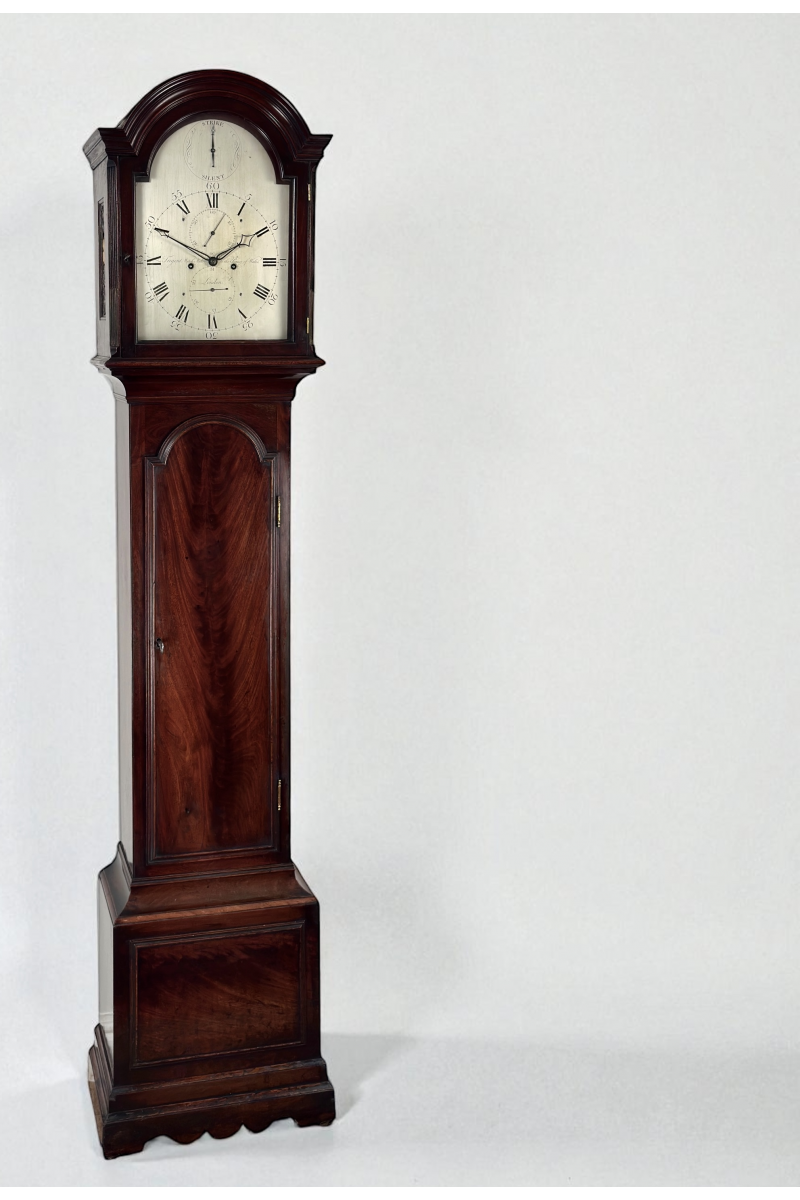London Longcase Clocks
As a general rule all London longcase clocks have five pillars between the plates. Most provincial clocks have only four pillars. This was a sign of quality and also kept the movement more stable and assisted the clockmaker when he was assembling the movement.
London longcase clocks were first introduced in any volume in the 1670s. These very first longcase clocks were made by famous makers such as East & Fromanteel and were veneered in ebony. Towards the latter part of the 17th century the wood being used was mainly an oak carcass with either walnut or marquetry veneer and sometimes ebonised. Also during this period the famous maker Thomas Tompion was producing clocks of outstanding quality and design.
Mahogany virtually took over completely during the 1760s and the first London mahogany longcase clocks started to evolve. Lacquered cases were also very popular in London, this again was a mainly oak carcass but decorated with Oriental designs.
By the 1770s the painted dial had been introduced and towards the end of the 18th century this had become much more popular and eventually replaced the full brass dial.

James Tregent, Watchmaker to the Prince of Wales
- Circa:
- 1795
- Height:
- 6ft 11 inches
- Recently Added

Early 18th century Chinoiserie longcase clock by Luke Wise of Reading
- Circa:
- 1720
- Height:
- 7ft 2 inches
- Recently Added

An Elegant longcase clock by James Bullock of London with associations to George Graham
- Circa:
- 1765
- Height:
- 7ft 4 inches
- -£3,000.00

Chinoiserie longcase clock by Gardner of London
- Circa:
- 1775
- Height:
- 7’10.5”

A high quality London longcase clock by Dwerryhouse & Carter
- Circa:
- C.1805
- Height:
- 6’6”

Small Grandmother clock by Hunt & Roskell of London
- Circa:
- 1870
- Height:
- 5’ 8”

Regency longcase clock by Viner of London
- Circa:
- 1820
- Height:
- 6ft 8.5 inches
- -£1,750.00
- SOLD

London Longcase Clock by King of Ratcliff Highway
- Circa:
- 1780
- Height:
- 7'2"
- -£2,250.00

Unusual Edwardian longcase clock by Maple & Co of London
- Circa:
- 1900
- Height:
- 7'5"

Regulator Longcase Clock by Tuck of Stoke Newington, London
- Circa:
- 1835
- Height:
- 6'3½"

